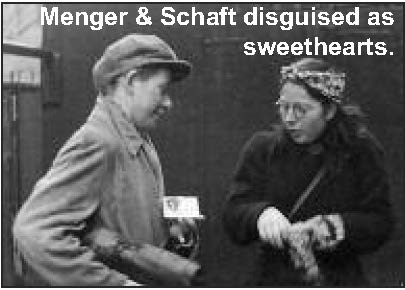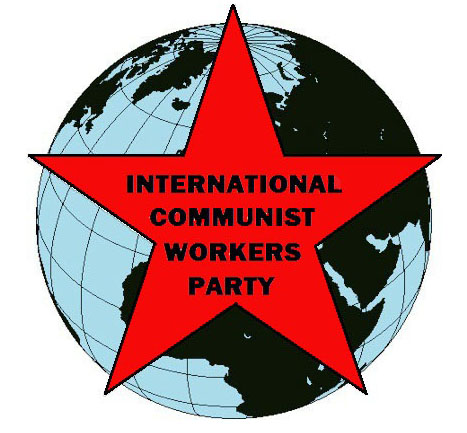| FROM AGRICULTURAL PRODUCTION TO COMMUNIST REVOLUTION
EL SALVADOR- We were part of the social
base of the fmln during its armed conflict with
the Salvadoran armed forces in 1987. A friend
and I (who are both today comrades in the
ICWP) asked a liberal priest, "What is communism?"
We had heard and read that communism was
bad for the world and that it took everything
away, even a person's soul. He answered,
"Communism isn't something made in Russia or
China and sent from there, but it's something
that grows and must be cultivated. The revolutionary
process must be followed to consolidate
communism here."
When I went around the social base of the
fmln, I thought the revolutionary process was
communist; when I heard from a rebel radio station
that the goal was socialism, I thought this
wasn't what we wanted. From then on the question
arose in me: why weren't we fighting directly
for communism? In 1997, years after the
war ended, a friend from the area gave me a
copy of the old newspaper.
Today, through reading and understanding
the political-ideological line of the newspaper
Red Flag, we are on the road to organizing with
the communist ideas of the International Communist
Workers' Party— ICWP.
We are putting ICWP's revolutionary ideas
into practice. We have built collectives to produce
corn, beans and vegetables on the land of
co-workers. In these agricultural collectives we
work together, men and women, young and less
young, with the goal of sowing the seeds of revolutionary
consciousness and to produce food
security, which this capitalist system does not
guarantee us. We farm workers often suffer
hunger, along with racism, since most people
think we are ignorant.
Since we produce what we need and not for
profit, we struggle to counter capitalist exploitation.
Our ideal is to grow with this way of producing
and have co-workers join us.
Not all of us in the collectives are fully convinced
about the communist ideas of the project;
the rest of us are members of the ICWP or Red
Flag readers. We are sure that this is a revolutionary
school for communism and that when
we obtain results and are able to help them fully
understand that only through solidarity and collectivity
can we move forward, they will take
quantitative and qualitative steps to join our
struggle for the system of the working class:
communism.
---Comrade in El Salvador
AC Driver Likes Red Flag
Some of us comrades distributed Red Flag
and an ICWP leaflet to A/C Transit workers and
passengers the day before they voted on the
contract. I talked with a driver from Nicaragua
who said that he had read other editions of Red
Flag. He asked me where I came from. I told
him, "I come from Mexico. I participated in building
the Party there and now here also."
He said, "So you came to stir up the waters
here?""Yes," I told him.
The driver said that he participated in the Sandinista
movement and in the end the leaders of
the movement kept the power and the wealth for
themselves. He asked, "Why do we have to believe
in socialism if it hasn't worked?"
I explained to him that socialism and communism
are different. The main difference is that in
communism there won't be money. The attempts
at socialism in China and Cuba maintained
money and wage differences, keeping class
differences. This has been state capitalism. This
won't exist in communism.
The driver had to go back to work, but he took
the newspaper and the leaflet. He said he would
read this edition and he wished me good luck.
--A comrade
Child Miner Revolutionaries Will Bury
the Bosses
MEXICO-August—The sun has not yet risen
and hundreds of children are already preparing
to go to work in some little mine to extract coal.
They work 8 to 12 hours a day, for a third an
adult's wages. The small shafts are small tunnels
in which an adult can't usually fit. In Mexico,
it has been identified that 3.5 million children
work, of whom 600,000 carry out high risk jobs
like mining, agriculture and construction. In the
coal sector alone, it is estimated that children
work in 18% of the mines.
The murder occurred in mine 3 Ferber of the
Binsa company on February 19, 2006 in Sabinas,
Coahuila where among the dead were
found the bodies of several children. The government
claimed that only one child, named
Jesus Fernando, worked there. The pain of their
families and friends makes them remember
these children, and they formed an organization
called Pasta de Conchos Family. More than 7
years have passed and there have been more
deaths in vertical shafts where 80% of the accidents
occur.
Even in most "normal and legal" mines, they
don't have drinking water, nor bathrooms and
they deny permission to leave. Workers can
spend 3 to 4 days without receiving food.
The existence of "clandestine" coal mines that
are not registered with Social Security means
savings for the subcontractor companies and
millions in profits for the companies that don't
take responsibility for this production, like Grupo
Mexico.
Grupo Mexico has the concession for the largest
sale of copper in the country and uses a
system of contracting in the Buenavista Copper
Mine (previously called Cananea) in which miners
work without benefits, or with temporary
contracts. The government controls the contract
with the Federal Electricity Commission for the
purchase of coal through the Promoter for Mining
Development of Coahuila, which decides
who gets the contracts. This creates a competition
to the death to be able to get the coal to
market and this determines what is happening in
every mine and in all mining nationwide.
In a communist world, work will always be necessary,
but what will not exist are schools or
dangerous factories or mines like today. Children
will not have to perform risky jobs. In the
production collectives, the parents, friends, and
comrades will work, learn and have fun. The
most important thing is there will not be shifts of
dangerous, repetitive work for many hours. Work
schedules could vary, depending on the situation.
Children won't have to spend several hours
sitting and learning, without seeing any relationship
between what they are learning and the
world around them. It will be a world of work and
learning, making the most of every human being
for the benefit of the whole society. Let's organize
ICWP so that there is no child or adult having
the life sucked from them by some boss.
--Red Dad
Not then, not
now, not ever by
Truus Menger.
The most well
known story of a
young Dutch girl during
World War II,
the Diary of Anne
Frank, has been
translated into over fifty-five languages and is
assigned to students around the world. In her
diary, Anne Frank writes about her experiences
as a young Jewish teenager, hiding for two
years in an attic from the Nazis.
 Almost unknown is the story of Dutch young
women, Truus and Freddie Oversteegen and
Hannie Schaft, who were part of the Communist
resistance to the Nazis during the same period.
Truus and Freddie, daughters of a single mother,
grew up in a Communist household in
Haarlem, a suburb of the Dutch capital, Amsterdam.
When the Nazis occupied Holland, they
were only fourteen and sixteen years old, but
they joined a Communist resistance cell. They
smuggled illegal Communist literature, carried
out acts of sabotage, assassinated Nazis and
Dutch collaborators, and helped rescue Jewish
children on the way to the gas chambers.
In 1943, Hannie Schaft, a law student from
Amsterdam, joined the group. She became
known as "the girl with the red hair" after someone
saw her bicycling away from an assassination.
After that she dyed her hair black and wore
fake spectacles.
Almost unknown is the story of Dutch young
women, Truus and Freddie Oversteegen and
Hannie Schaft, who were part of the Communist
resistance to the Nazis during the same period.
Truus and Freddie, daughters of a single mother,
grew up in a Communist household in
Haarlem, a suburb of the Dutch capital, Amsterdam.
When the Nazis occupied Holland, they
were only fourteen and sixteen years old, but
they joined a Communist resistance cell. They
smuggled illegal Communist literature, carried
out acts of sabotage, assassinated Nazis and
Dutch collaborators, and helped rescue Jewish
children on the way to the gas chambers.
In 1943, Hannie Schaft, a law student from
Amsterdam, joined the group. She became
known as "the girl with the red hair" after someone
saw her bicycling away from an assassination.
After that she dyed her hair black and wore
fake spectacles.
In March, 1945, Hannie was caught in a
checkpoint with illegal literature and a gun. In
jail, the Nazis discovered that she was "the girl
with the red hair," and on April 17, 1945, three
weeks before the end of the war, she was taken
out to the beach, shot, and buried in a shallow
grave.
Truus and Freddie survived the war, and in
1982 Truus wrote a book about their experiences.
Hannie's story is also included in other
books about women in the resistance.
This book is a helpful antidote to the passivity
that the ruling class pushes with the Diary of
Anne Frank. But you don't really get much of a
view of why these young people were Communists.
There is one passage where a young working-class comrade talks vaguely about the
world he hoped to see after the war, as well as a
critique of the corruption and opportunism of the
resistance groups tied to the Dutch ruling class.
But these young Communists, like
some "communists" today, were won
to a policy of uniting with "lesser evil"
bosses against racism and fascism
and hiding, postponing, and eventually
discarding their communist politics.
After the war, capitalism in
Holland went on just the same.
We have to learn from this mistake
to always keep our goal of a
Communist society primary. But we can also
learn from and emulate the courage and dedication
of the young women Communists who
fought against fascism.
--Red Reader
First Article
|

